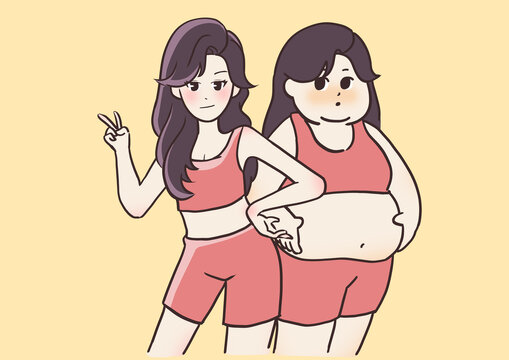Causes of Obesity and Scientific Exercise
Obesity is a multifactorial condition influenced by behavior, environment, biology, and medical factors. In many communities, the most visible driver is reduced daily physical activity. Rapid economic development, widespread car use, long commutes, and screen‑based work and study have progressively displaced routine movement. Children and adolescents are particularly affected: heavy academic workloads, limited opportunities for physical education, and well‑intentioned parental chauffeuring reduce independent, active time. The pandemic further curtailed sports and access to facilities, amplifying these trends. When daily movement remains low for long periods, weight gain accumulates gradually and can be difficult to reverse without deliberate changes.
Dietary patterns also play a critical role. Energy‑dense, highly processed foods are convenient and inexpensive, and larger portions are common in modern food environments. Frequent snacking, sugar‑sweetened beverages, and irregular meal timing can create a sustained energy surplus that favors fat storage. Genetics and family habits interact with these factors, shaping appetite, food preferences, and how the body stores energy. A smaller proportion of people experience weight gain from medical causes or treatments—such as long‑term corticosteroid use, certain psychiatric or antidiabetic medications, or endocrine disorders—underscoring the need for clinical evaluation when weight changes are rapid, unexpected, or accompanied by other symptoms. Reported proportions of these contributors vary by population and study methods, but the practical implication is constant: most cases arise from a combination of low activity and excess energy intake superimposed on individual susceptibility.
A useful starting point for understanding weight change is energy balance. Body mass rises when energy intake chronically exceeds energy expenditure and falls when the reverse is sustained. Although this principle is simple, lived experience is more complex. Appetite and satiety signals respond to sleep, stress, food quality, and activity levels; ultra‑processed foods can be easier to overconsume than minimally processed foods; and some medications alter hunger or metabolism. For these reasons, strategies that pair modest dietary adjustments with gradual increases in activity tend to be more sustainable than extreme diets or sudden, exhaustive exercise.
Equally important is the principle of body energy supply. At rest and during easy movement, the body draws on a mix of fat and carbohydrate; as intensity rises, reliance shifts toward muscle glycogen and blood glucose. Regular aerobic activity improves the ability to oxidize fat at submaximal intensities, preserves glycogen for higher‑intensity efforts, and enhances insulin sensitivity. Resistance training helps maintain or increase lean mass, supporting basal metabolic rate and functional capacity. Together, these adaptations make it easier to maintain energy balance without severe restriction and reduce the tendency to regain weight after initial loss.
Scientific exercise and scientific diet work best in combination. A practical, health‑first approach emphasizes consistent, moderate aerobic activity—such as brisk walking, running, cycling, or swimming—built into most days of the week, with sensible progression to protect joints and tendons. Complementing this with two or more weekly sessions of resistance training helps preserve muscle during weight loss and supports long‑term maintenance. On the nutrition side, centering meals on minimally processed foods, adequate protein, fiber‑rich vegetables and whole grains, and healthy fats improves satiety and nutrient density while making moderate calorie reduction more comfortable. Extreme rules are rarely necessary; steady habits that can be sustained for months and years are more effective.
Creating supportive environments matters for both adults and children. Schools and families that carve out protected time for movement, provide access to safe spaces for play or sport, and model active transportation help normalize daily activity. Rebalancing academic demands with regular physical education improves fitness and attention while reducing long sedentary stretches. Communities that improve sidewalks, parks, and bike routes make active choices easier for everyone.
A practical path forward begins with small, repeatable steps. For many people, increasing daily walking, adding short, manageable aerobic sessions, and introducing simple strength exercises provide an immediate foundation. Pairing these changes with modest dietary shifts—such as substituting water for sugary drinks, emphasizing whole foods at meals, and being mindful of portion size—creates a gentle energy deficit without undue hunger. Individuals with rapid weight gain, significant comorbidities, or suspected medication‑related causes should seek medical guidance to tailor plans and address reversible contributors.
In summary, most obesity emerges from the convergence of low daily activity and dietary excess within environments that make both likely, while genetics and medical factors shape individual susceptibility. Understanding energy balance, appreciating how the body supplies energy at different intensities, and combining consistent exercise with sensible nutrition form the core of effective, sustainable weight management. Progress is measured in steady habits, not overnight change; the goal is health, function, and well‑being that last.







